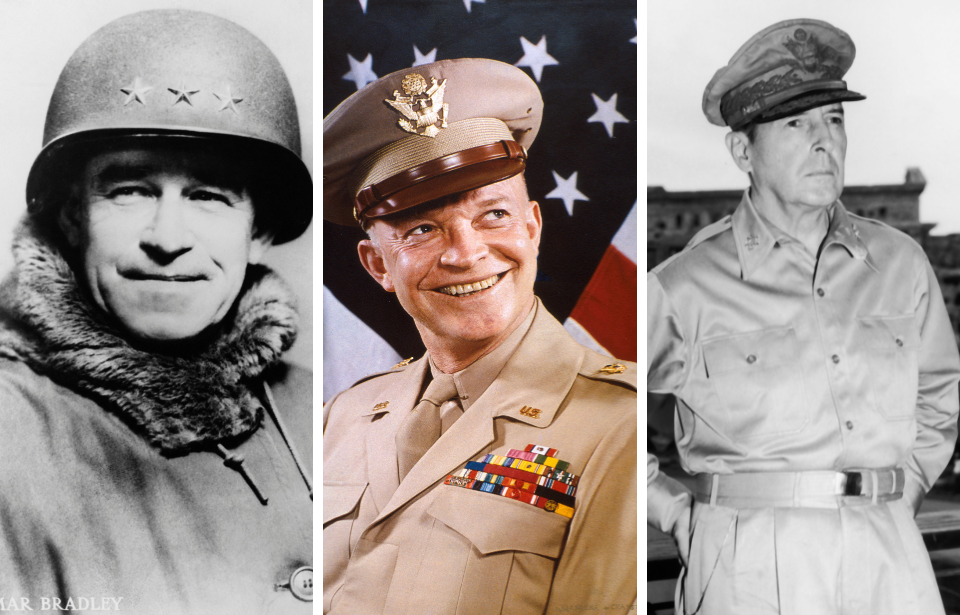Following the death of Gen. Omar Bradley in 1981, the prestigious rank of five-star general has attained an almost mythical status. Established by Congress as a temporary designation in 1944, this distinguished rank has been bestowed upon only nine service members. Here is a short overview of their extraordinary military achievements.
Makings of a five-star general

Born out of necessity during World War II, the five-star rank was temporarily established to eliminate the incompatibility of US commanders charged with commanding Allied officers of a technically higher ranking. When Public Law 482 permitted the creation of the rank, the US Army promoted four servicemen to Generals of the Army: Dwight D. Eisenhower, George Marshall, Douglas MacArthur and Henry “Hap” Arnold.
The law also allowed the US Navy to promote its sailors, with Ernest King, Chester Nimitz and William Leahy becoming fleet admirals. A fourth, William Halsey, was promoted in 1945. Five years later, Omar Bradley became the ninth and final five-star general.
Technically, the rank still exists, but no one else has been given the title. If the US president and Senate agree, a general or admiral can be promoted to the five-star rank at any time, but military policy more closely resembles the parameters established in WWII: five-star generals are only created if their rank is equal to or higher than officers of another nation under his or her command.
These nine men rose above and beyond what their country expected of them. They were committed leaders, powerful warriors and sophisticated strategists – nothing short of heroes. The few who were elevated to this prestigious position were given active-duty pay for the remainder of their lives, even after they retired.
Fleet Adm. William D. Leahy
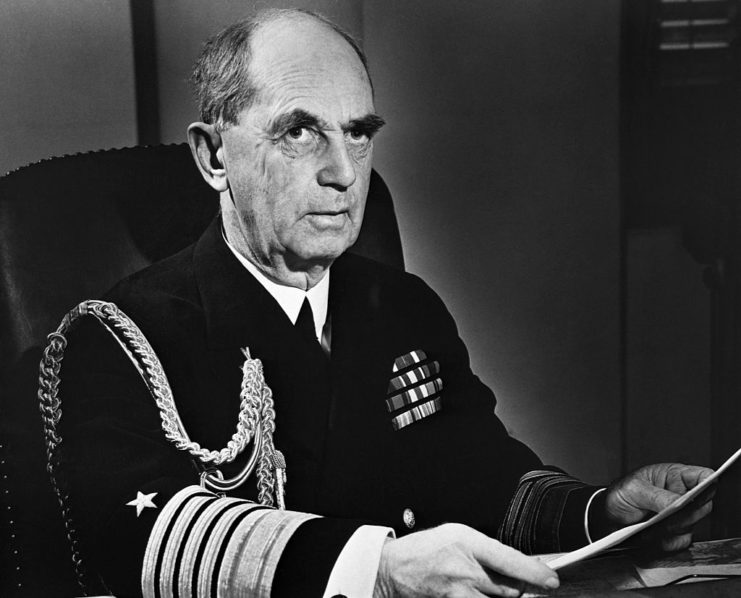
The very first person to be promoted to the five-star rank was Fleet Adm. William Leahy. The son of an American Civil War veteran, he attended the US Naval Academy, graduating in 1897. He was assigned to the USS Oregon (BB-3), and went on to participate in the Battle of Santiago de Cuba, a key engagement of the Spanish-American War.
During the Philippine-American War, Leahy was given command of the gunboat USS Mariveles, and years later served beneath Capt. Henry Mayo aboard the USS California (ACR-6). While serving on the vessel, he participated in the Banana Wars, during which he became chief of staff of the expeditionary force operating as part of the US occupation of Nicaragua.
Upon his return to the US, he was assigned to the Bureau of Navigation as a detail officer, after which he was made acting chief. While commanding the gunboat USS Dolphin (PG-24) during World War I, he was sent to the US Virgin Islands, and performed sea duty during the interwar period.
Leahy continued to serve alongside Truman after Roosevelt’s death
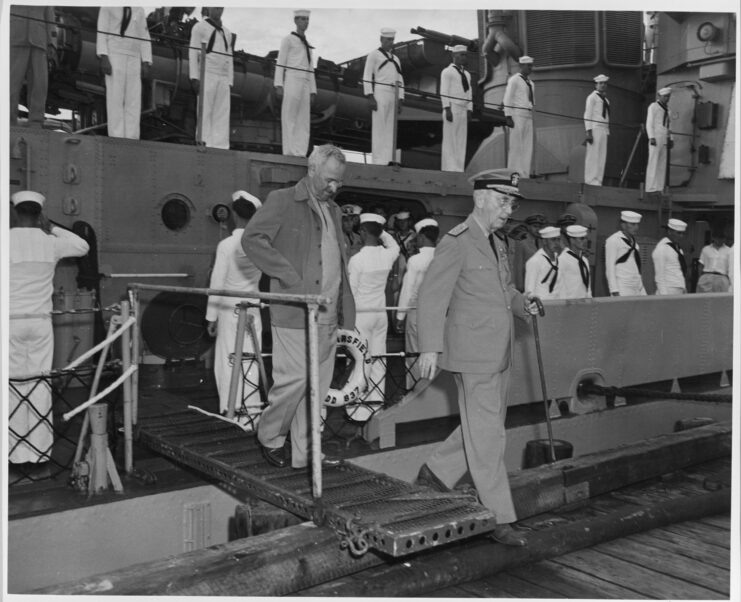
Leahy served as the Chief of Naval Operations (CNO) from 1937 to 1939, a time characterized by the US Navy’s expansion. After his retirement, he was appointed Governor of Puerto Rico and later took on the role of US Ambassador to France. Upon returning from France, Leahy was recalled to serve as a senior member of the Joint Chiefs of Staff and as an aide to President Franklin D. Roosevelt, where he played a big role in shaping key strategies during World War II.
In December 1944, he achieved the rank of fleet admiral. After Roosevelt’s death, Leahy continued his service under President Harry S. Truman, contributing to the US victories over Germany and Japan. Interestingly, he initially doubted the viability of the atomic bomb, expressing skepticism that it would detonate, but he revised his opinion after witnessing a successful test.
Following the war, Leahy was named interim leader of the National Intelligence Authority (NIA). In January 1949, he retired from government service due to health concerns, as he was diagnosed with a partial kidney blockage. Over a decade later, on July 20, 1959, he passed away at the age of 84. At the time of his death, he held the distinction of being the oldest active-duty officer in US Navy history, having never formally retired from military service.
Gen. George Marshall
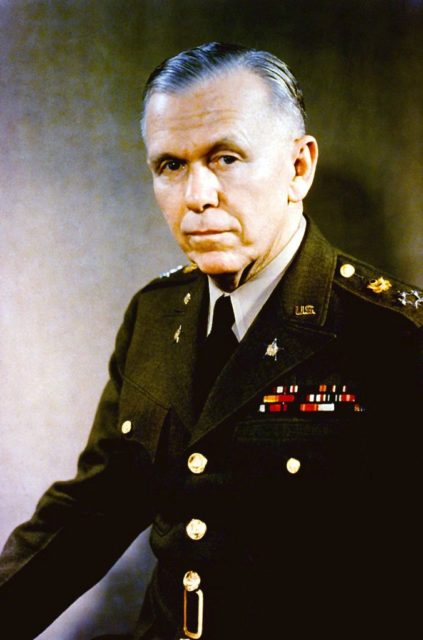
George Marshall’s lengthy military service is truly awe-inspiring. He became a second lieutenant in the US Army in 1902, just a year after graduating from the Virginia Military Institute. He went on to study modern warfare at Fort Leavenworth, Kansas, and graduated the top of his class at the US Army Staff College.
Aiding in the 1st Infantry Division’s preparation for combat during WWI, Marshall was one of the men responsible for planning the Meuse-Argonne Offensive, successfully transferring nearly 600,000 troops without provoking the Germans. After serving in Europe, Marshall was made the aide-de-camp to Gen. John J. Pershing and traveled to dozens of posts internationally and in the US.
In 1927, Marshall was named assistant commandant of Fort Benning, Georgia’s (now Fort Moore) Infantry School, where he was instrumental in initiating changes to modernize various processes. He subsequently became the commanding officer of the 8th Infantry Regiment at Fort Screven, Georgia, and after transferring between several commands found himself assigned to the War Plans Division in July 1938.
At the start of WWII, President Franklin D. Roosevelt appointed Marshall as the Army chief of staff. He became an instrumental leader in the war effort, preparing US forces for war and coordinating the Army’s expansion throughout Europe. He also didn’t always agree with the leaders of other Allied countries – for example, he opposed the North Africa Campaign and had planned for Operation Overlord to initially occur in April 1943.
Marshall was named head of the American delegation at Queen Elizabeth II’s coronation
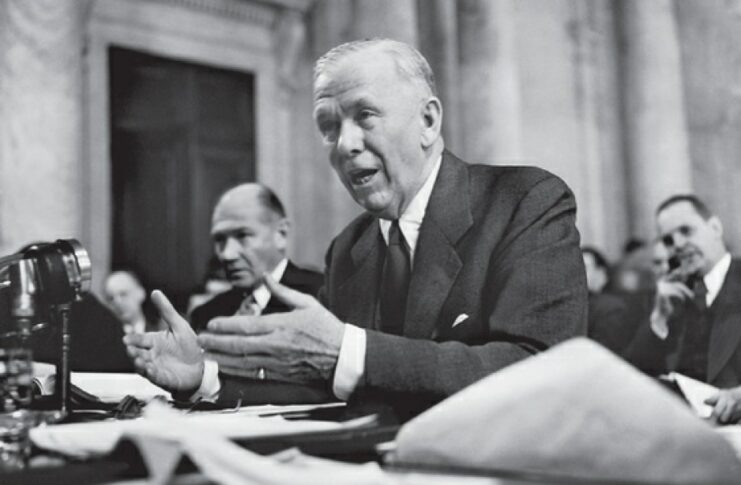
President Harry S. Truman named Marshall the “architect of victory” in the conflict, and he was promoted to five-star general, the first Army officer to be named to the rank. Not wanting to disgrace the title, he continued to be actively involved in Allied efforts in both Europe and the Pacific Theater.
Following WWII, Truman sent Marshall to China to prevent the resumption of the Chinese Civil War. He was rather unsuccessful at forming a coalition government, and the conflict raged on until 1949, resulting in a Communist victory.
Under the Truman Administration, Marshall was named Secretary of State and, later, Secretary of Defense. His active-duty designation made it hard for him to fulfill his political responsibilities and he was ultimately removed from it until he was no longer in office.
Following his retirement, Marshall served as the chairman of the American Battle Monuments Commission, and he was named the head of the American delegation at the coronation of Queen Elizabeth II. He passed away on October 16, 1959, following a series of strokes. He was 78 years old.
Fleet Adm. Ernest King
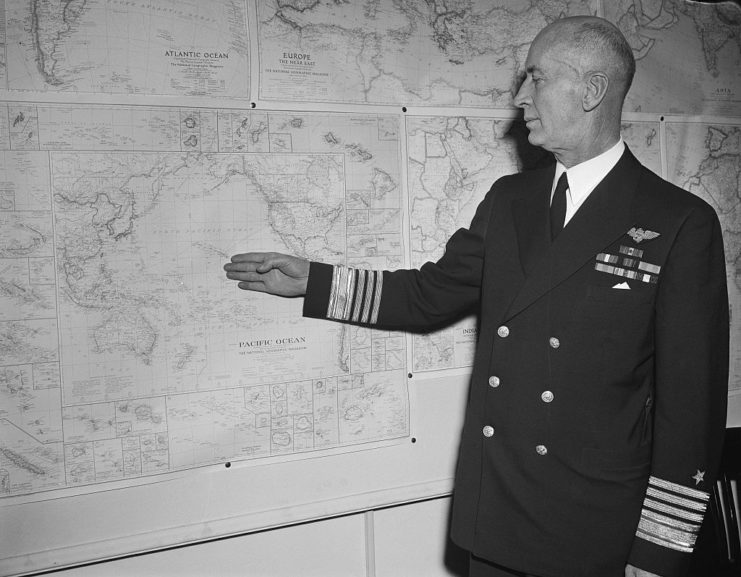
Ernest King’s lifelong service in the US Navy began at a very early age. Attending the US Naval Academy in 1897, he served aboard the USS San Francisco (C-5) during the Spanish-American War. After serving on other vessels, he was named the commander of the USS Terry (DD-25), participating in the US occupation of Veracruz.
During WWI, King served beneath Vice Adm. Henry Mayo, commander-in-chief of the Atlantic Fleet. For his efforts during the conflict, he was awarded the Navy Cross. Following the war, King, a captain, was placed in command of a submarine division.
King was named commander-in-chief of the US Fleet following the Pearl Harbor attack
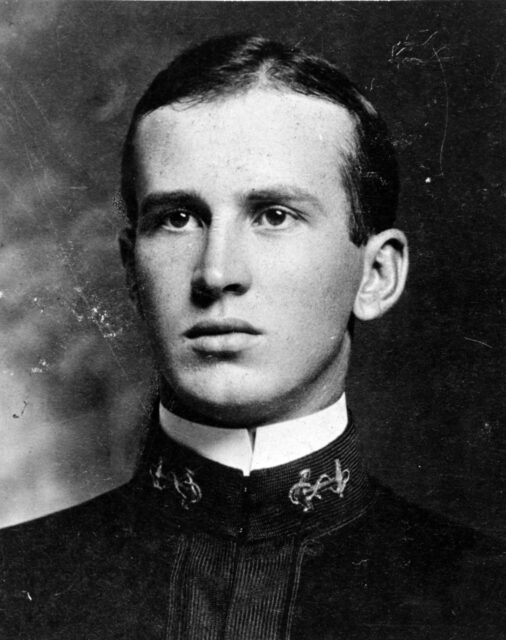
An early leader in naval aviation, King received his wings in May 1927. He became assistant chief of the Bureau of Aeronautics under Rear Adm. William Moffett, before being replaced by Cmdr. John Henry Towers following repeated disagreements. This was followed by a stint aboard the aircraft carrier USS Lexington (CV-2) and a promotion to chief of the Bureau of Aeronautics.
Following the Japanese attack on Pearl Harbor, the then-vice admiral was named commander-in-chief of the US Fleet and was promoted to chief of naval operations (CNO) the following year. King was instrumental in leading offensive operations against Japan, despite limited resources, and was promoted to fleet admiral in December 1944.
He continued to advise on military matters until his death on June 25, 1956, at the age of 77.
Gen. Douglas MacArthur
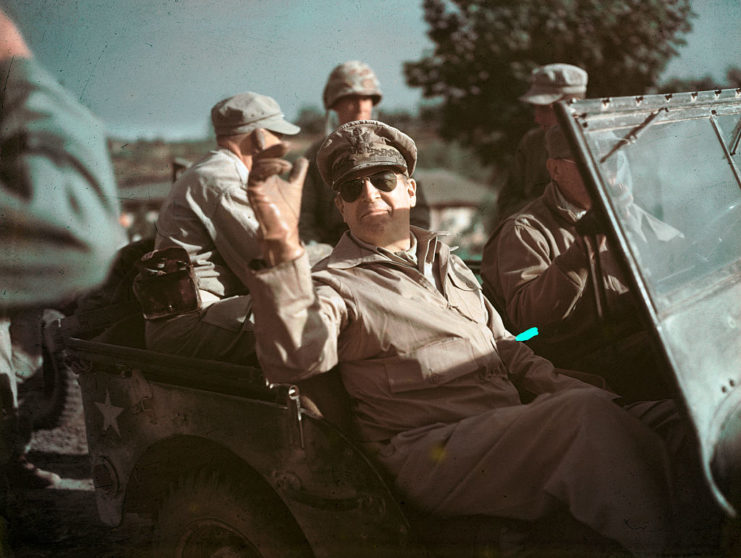
A true American innovator, Douglas MacArthur became the US Army’s youngest general at just 45 years old. Born to an Army officer father, MacArthur later recalled, “I learned to ride and shoot even before I could read or write – indeed, almost before I could walk or talk.” He graduated from the US Military Academy West Point in 1903 and was stationed in the Philippines.
Having served in Europe during the First World War with the 42nd “Rainbow” Division, he was named the superintendent of West Point in 1919 and, in 1930, became the Army chief of Staff. While in this role, MacArthur was tasked with removing the Bonus Army from Washington, an incident that became a public relations nightmare for him and the US military.
Prior to WWII, MacArthur was stationed in the Philippines. When Japanese aggression became an increasing threat to security in 1941, he was recalled to active-duty as commander of the Army forces in the Far East. For most of his career, he was heavily involved in the Philippines, and was named the Supreme Commander of the Allied Forces in the Southwest Pacific in April 1942.
MacArthur was awarded the Medal of Honor
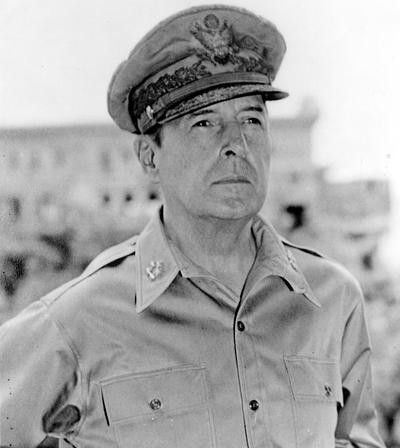
Over the course of the conflict, he conducted an island-hopping campaign. Following the Japanese invasion of the Philippines, he vowed to return, a promise he made a reality 16 months later. He was promoted to the rank of five-star general in December 18, 1944, and later went on to oversee the Allied occupation of Japan following the country’s surrender.
For his efforts in the Philippines, MacArthur was awarded the Medal of Honor.
MacArthur was recalled into service once more at the outbreak of the Korean War as the chief of the United Nations (UN) Command. While his troops were able to push the North Koreans back toward the Chinese border, a counteroffensive saw the Americans driven back into the South.
This prompted him to request permission to bomb China and use the National Chinese forces from Taiwan against the country. He was denied, leading to a falling out between him and President Harry S. Truman. MacArthur was subsequently fired from his position. He passed away on April 5, 1964, at the age of 84.
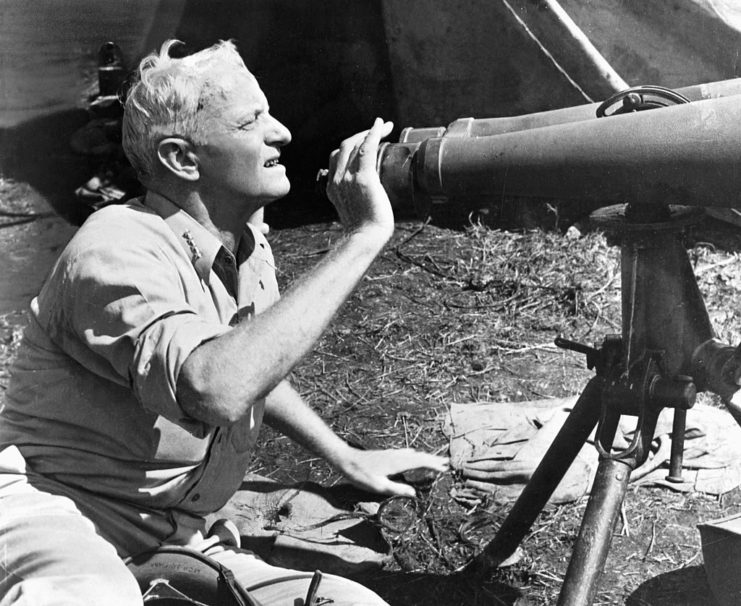
Despite being a decorated fleet admiral, Chester Nimitz wasn’t even given his high school diploma until after his promotion. Just like his grandfather, he became a naval captain and successfully commanded several submarines, including the USS Snapper (SS-185), Narwhal (SS-167) and Skipjack (SS-184).
While initially interested in attending the US Military Academy West Point, no appointments were available, leading Nimitz to apply for the US Naval Academy. He graduated in 1905 and was assigned to the USS Ohio (BB-12) as a warrant officer. Two years later, he was commissioned as an ensign, eventually commanding the USS Dacatur (DD-5). The destroyer ran aground under his leadership, resulting in him being court-martialed and punished with a letter of reprimand.
Nimitz served throughout WWI and beyond, working as an aide for a number of US Navy officials. He was eventually appointed commander-in-chief, Pacific Fleet (CINCPACFLT) in 1941, serving in the position throughout the war. Among his most notable engagements were the Battle of the Coral Sea and the crucial Battle of Midway, which saw the Japanese lose several important naval vessels.
Nimitz replaced King as chief of naval operations (CNO)
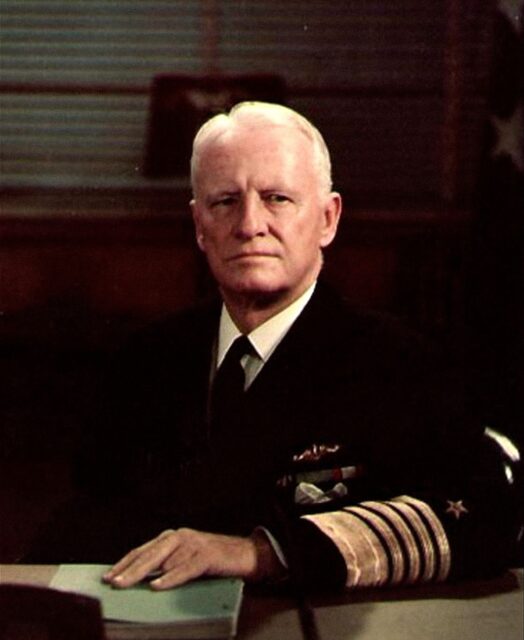
As WWII continued, Nimitz’s forces continued to inflict loses against the Japanese. The Battle of the Philippine Sea, for example, led the enemy to lose control of Tinian, Saipan and Guam, while action in the Caroline Islands led the American forces to secure Ulithi, Peleliu and Angaur. For his efforts, Nimitz was promoted to the rank of fleet admiral on December 19, 1944.
Just under a year later, Nimitz participated in the naval landings on Iwo Jima and Okinawa, and, in September 1945, served as the signatory to the surrender terms in Japan aboard the USS Missouri (BB-63). This was followed shortly after by him replacing Ernest King as chief of naval operations (CNO).
After continued service in the Navy and with the UN, Nimitz spent much of his time involved in his local San Francisco community, including raising funds for the Naval Historical Foundation, with whom he helped restore the Japanese battleship Mikasa. On February 20, 1966, a few months after suffering a stroke, he passed away, just four days shy of his 81st birthday.
Gen. Dwight D. Eisenhower
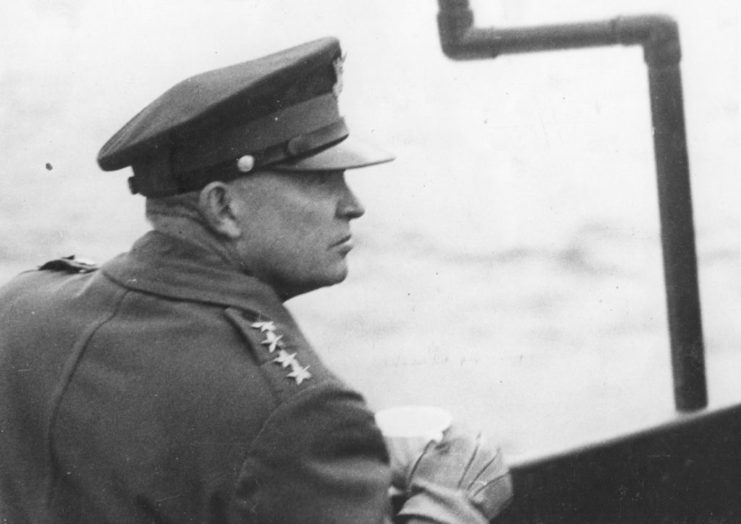
Dwight D. Eisenhower is renowned for his critical leadership as Supreme Commander of the Allied Forces (SHAEF) during D-Day, but his influence goes beyond his military achievements. Although initially interested in attending the US Naval Academy, Eisenhower ultimately pursued his military education at the US Military Academy at West Point, graduating in 1915. Commissioned as a second lieutenant, he began his service at Fort Sam Houston, San Antonio.
Eisenhower requested an overseas deployment during WWI but remained stationed in the US. Initially assigned to the 65th Brigade Engineer Battalion, he was later instructed to serve in France in 1918. However, his orders were changed, leading him to command a training unit at Camp Colt, Pennsylvania, within the newly established Tank Corps.
During the interwar period, Eisenhower served under notable US Army generals such as John J. Pershing, Fox Conner, Walter Krueger, and Douglas MacArthur. After the attack on Pearl Harbor, General George Marshall called him to Washington to assist in crafting American war strategy.
In June 1942, Eisenhower became Commanding General of the European Theater of Operations (ETOUSA) and was later appointed Supreme Commander Allied Expeditionary Force in North Africa. He led the Allied landings in North Africa and then oversaw the invasion of Sicily.
Eisenhower was the only president to hold the five-star rank
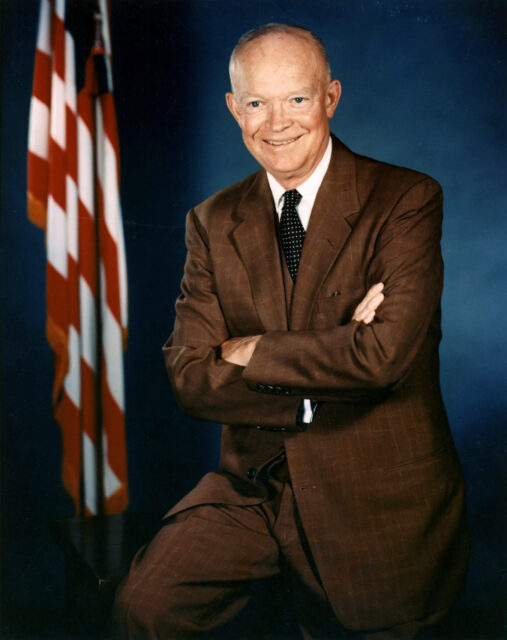
This was followed by his promotion to SHAEF, where he planned and carried out Operation Overlord. As the Allies advanced into Europe, his leadership stood out. Acknowledging the sacrifices required by the war, he made a point to visit every division involved, showing his respect for their commitment and sacrifice.
Eisenhower’s promotion to five-star general on December 20, 1944, marked a major milestone in his career. As WWII ended, he ensured the atrocities committed by the Germans were never forgotten, directing his troops to thoroughly document the horrors of the concentration camps.
After the war, Eisenhower served in the American-occupied zone of Germany before returning to the US to take on the role of Chief of Staff of the Army. In 1952, he was elected president of the United States, becoming the only president to hold the five-star rank. During his two terms, he worked to establish a truce in the Korean War and played a crucial role in easing Cold War tensions.
Gen. Henry Arnold
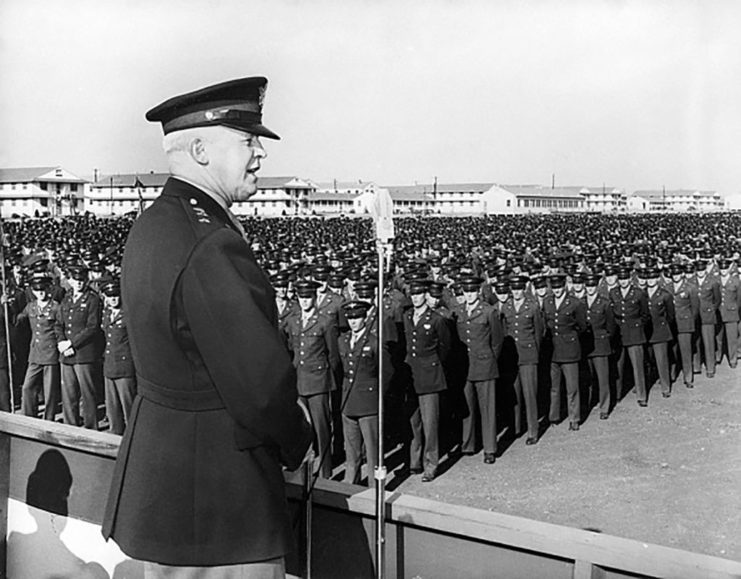
Henry Arnold was a true US Air Force pioneer, and the only person to have been promoted to the rank of five-star general in two services. Like several others on his list, he was related to men who’d served their country, with his father acting as a surgeon with the Pennsylvania National Guard during the Spanish-American War.
Upon graduating from the US Military Academy West Point in 1907, Arnold was commissioned as a second lieutenant with the 29th Infantry Regiment, before switching to the 20th Infantry upon his arrival in the Philippines. Serving under Capt. Arthur S. Cowan, he was eventually invited to join the US Army Signal Corps.
With an interest in aviation, Arnold was taught to fly by the Wright Brothers, becoming one of the first military aviators. His skills allowed him to teach other pilots at the Signal Corps’ aviation school, and he even appeared as a pilot double in two silent films in 1911, The Military Air-Scout and The Elopement.
Prior to the First World War, Arnold traveled to Panama to organize an air service, remaining there until the US entered the conflict. He was subsequently put in charge of Information Service in the Aviation Division of the Signal Corps, before being assigned to the Office of Military Aeronautics.
Arnold was a five-star general with both the Army and Air Force
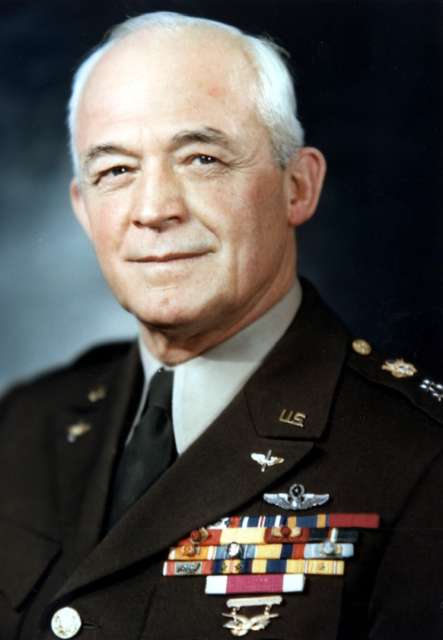
During the interwar period, Arnold promoted the development of the Boeing B-17 Flying Fortress and the Consolidated B-24 Liberator. He also attended and graduated from the US Army Industrial School, after which he commanded US Army Air Corps members at Marshall Field, at Fort Riley, Kansas. In 1938, he was promoted to chief of the Air Corps. This title later changed to chief of the US Army Air Forces.
Upon the US entry into WWII, Arnold was promoted to the rank of lieutenant general and named the commanding general of the US Army Air Forces (USAAF). He approved the creation of the Women’s Flying Training Detachment (later the Woman Airforce Service Pilots – WASP), which had been advocated for by famed female aviator, Jacqueline Cochran.
Arnold played a key role in the deployment of USAAF resources throughout the Second World War. Thanks to passion and dedication to aviation, the air arm of the Army grew from 22,000 officers with 3,900 aircraft to 2.5 million men and 75,000 planes! For his dedication, he was named a five-star general with both the Army and Air Force.
Unfortunately, during the latter years of the conflict, Arnold began to suffer from ill-health, with him ultimately leaving active-duty service in 1946. He died on January 15, 1950, at the age of 63.
Fleet Adm. William Halsey Jr.
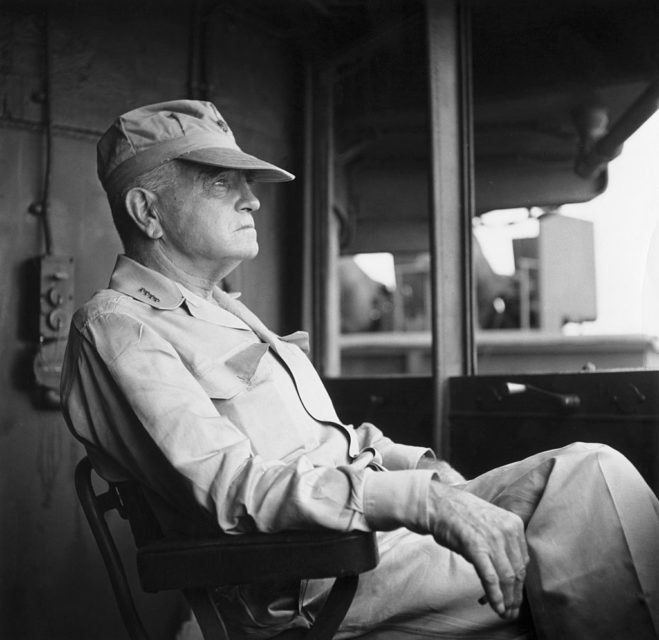
Fleet Adm. William Halsey was an accomplished and dedicated serviceman who commanded countless vessels throughout WWI and the Second World War. Military service was in his blood, with him being the son of US Navy Capt. William Halsey Sr. and a descendant of British Royal Navy Capt. John Halsey, who fought in Queen Anne’s War.
Halsey attended the US Naval Academy, and following his graduation in 1094 served aboard several battleships, including the USS Kansas (BB-21) and Missouri (BB-11). This was followed by assignments on various torpedo boats, leading to his command of the First Group of the Atlantic Fleet’s Torpedo Flotilla.
During WWI, Halsey commanded the USS Shaw (DD-68), and throughout the interwar period served gained command of the aircraft carrier USS Saratoga (CV-3) and, later, Yorktown (CV-5). During this period, he also earned his Naval Aviator’s Wings, becoming the oldest person to do so at 52 years old.
Halsey was in command of the USS Enterprise during the Pearl Harbor attack
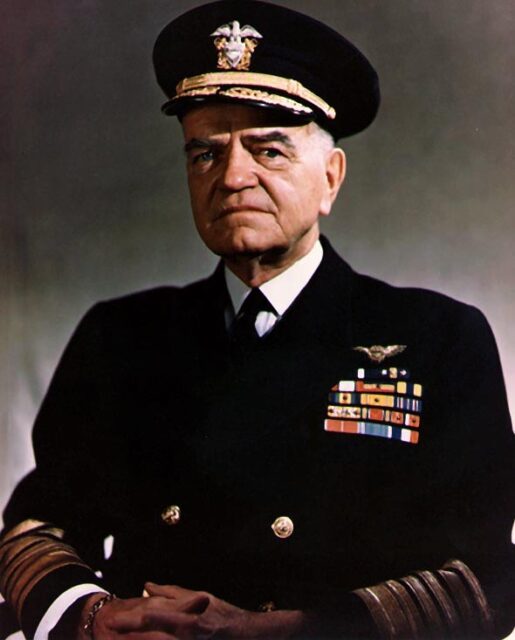
When the Japanese attacked Pearl Harbor on December 7, 1941, Halsey was in command of the USS Enterprise (CV-6) and was in charge of Carrier Division 2. After leading a series of raids against the Japanese, including involvement in the famous Doolittle Raid, Halsey was appointed commander of the South Pacific Force. In this position, he led the Americans during the Guadalcanal Campaign and fighting in the Solomon Islands.
When the fighting moved to the Central Pacific, Halsey was promoted to commanding officer of the Third Fleet, with whom he led campaigns to take Luzon, Palaus and Leyte, the former being the largest naval battle of the conflict. He also conducted a number of raids on Japanese bases. For his efforts, he was promoted to the rank of Fleet Admiral on December 11, 1945.
Halsey passed away of a heart attack on August 16, 1959, at the age of 76.
Gen. Omar Bradley
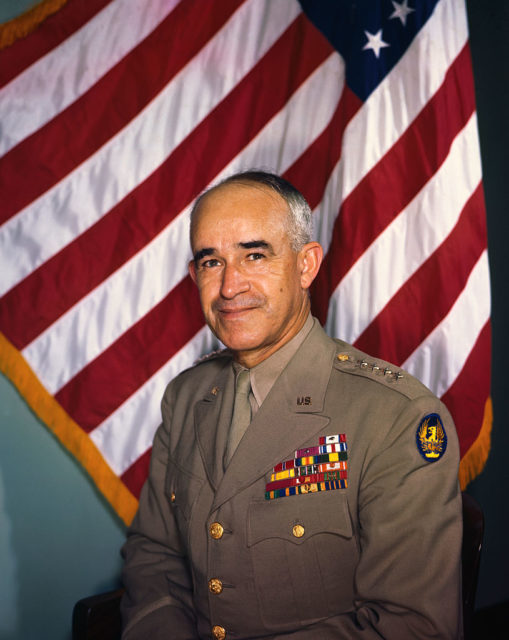
Omar Bradley was the last man to be awarded the rank of five-star general. He was urged by his Sunday School teacher to apply for the US Military Academy, graduating from West Point in 1915 alongside Dwight D. Eisenhower. He was commissioned into the US Army as a second lieutenant and stationed along the Mexican border in support of the US Expedition.
Bradley didn’t see combat during the First World War, as he and the 14th Infantry Regiment were tasked with protecting copper mines in the Pacific Northwest. Following the conflict, he attended Advanced Training at Fort Benning, Georgia and Advanced Officer Training at Fort Leavenworth, Kansas.
Upon the US entry into the Second World War, Bradley, by then a brigadier general, was tasked with training the 82nd Airborne and 28th Infantry Divisions, after which he was sent to North Africa to serve as George Patton‘s deputy commander. This was followed by a post in Sicily with the Seventh Army.
Bradley had commanded 43 divisions by the end of World War II
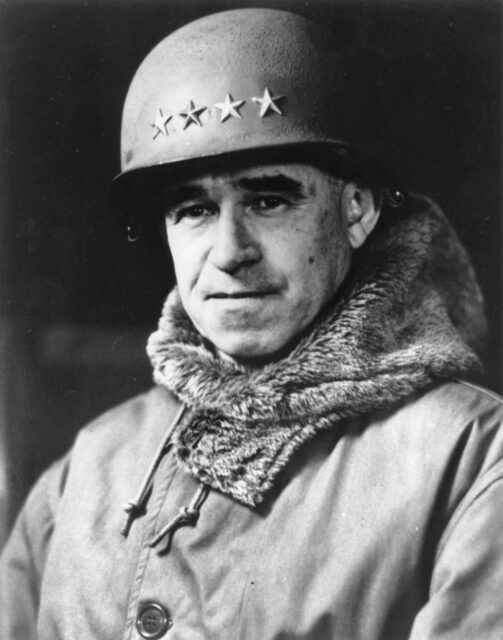
Bradley was known as an exceptional combat leader and was a favorite of the Allies, with his troops referring to him as the “GI’s general.” Eisenhower rewarded his abilities by assigning him as field commander for the American forces in Operation Overlord. Following the Normandy landings, he commanded the First Army and the 12th Army Group in France, and was present during the Allied victory at the Battle of the Bulge.
By the end of WWII, Bradley had commanded 43 divisions, which equaled 1.3 million men – the largest body of American soldiers to ever serve under a single field commander.
After a short break from the Army to lead the Veterans Administration, Bradley returned to service as chief of staff and, later, the chairman of the Joint Chiefs of Staff. In this role, he was promoted to five-star general and oversaw American efforts in Korea. He also notably served as an advisor to President Lyndon B. Johnson during the Vietnam War.
More from us: Chuck Yeager: From WWII ‘Ace in a Day’ to Breaking the Sound Barrier
New! Want to become a trivia master? Sign up for our War History Fact of the Day newsletter!
Bradley also worked with NATO, with him being awarded the Presidential Medal of Freedom for his efforts. He passed away on April 8, 1981, at the age of 88.
